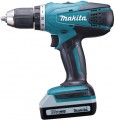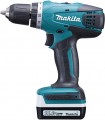Torque
Torque is the maximum force with which this model is capable of turning the working nozzle.
Higher torque gives more options, it allows you to cope with complex tasks such as drilling in hard materials, unscrewing stuck screws and nuts, etc. On the other hand, a lot of force requires corresponding power — and this, in turn, affects the dimensions , weight and cost of the tool itself, and also puts forward increased power requirements (mains power, battery capacity or pressure / compressor performance). And for some tasks, excessive torque is basically unacceptable, so for maximum versatility, it is desirable to have
torque control — and this affects the cost even more. And the more steps, the more optimally you can configure the tool to perform a particular type of work. So the general rule is this: when choosing, it is worth considering the specifics of the planned work, and not chasing the greatest working effort.
Detailed recommendations on choosing the optimal torque for different types of tools (see "Device") can be found in special sources. Here we note that it is of key importance primarily for screwdrivers, although it is also given for other types of tools. At the same time, in the “weakest” models, the maximum working force does not exceed 15 Nm, in the most powerful ones it is more than 150 Nm.
Weight
The total weight of the tool is usually the device itself, without attachments. For battery models (see "Power Source"), usually, the weight is indicated with a standard battery installed; for battery-powered models, the weight can be given both with and without batteries, but in this case this point is not particularly important.
Other things being equal, less weight simplifies work, increases accuracy of movement and allows you to use the tool for longer without tiring. However, note that high power and productivity inevitably increase the mass of the tool; and various tricks to reduce weight increase the price and can reduce reliability. In addition, in some cases, a massive design is more preferable. First of all, this applies to work with a large load — for example, drilling holes of large diameter, or making recesses with impact: a heavy tool is more stable, it is less prone to jerks and shifts due to uneven material, vibration of mechanisms, etc.
It is also worth noting that specific weight values are directly related to the type of tool (see "Device"). Screwdrivers are the lightest — in most of them this figure
does not exceed 500 g. Screwdrivers and drill drivers are more "heavy": their average weight is
1.1 – 1.5 kg, although there are many lighter (
0.6 – 1 kg) and heavier (
1.6 – 2 kg or more ) models. And clas
...sic drills and wrenches have the greatest weight: such a tool must be quite powerful, so for them 1.6 – 2 kg is an average, 2.1 – 2.5 kg is above average, and many units weigh more than 2, 5 kg.Chuck diameter
The nominal diameter of the chuck supplied with the tool.
This size is indicated by the maximum diameter of the drill (or bit shank) that can be installed in the fixture. There are several standard sizes; the most popular nowadays are
the 10 mm cartridge and the 13 mm cartridge ;
drills with a 16 mm chuck are noticeably less common, as well as miniature mounts
less than 10 mm(usually 8 mm or 6 mm).
The larger the drill, the more power is required for its efficient use; accordingly, larger cartridges are characteristic of heavier and more powerful tools. At the same time, it is quite possible to install a smaller cartridge on the drill, if the possibility of replacement is technically provided for at all. But the possibility of working with larger fasteners (and drills for them) should be clarified separately: not every tool has enough power for this.
Wood drilling max. ⌀
The largest diameter of holes that the tool can make when drilling with a conventional drill in wood.
The larger the hole diameter, the higher the resistance of the material, the more power the tool must provide and the higher the load on it. Therefore, the maximum allowable drilling diameter must not be exceeded, even if the chuck allows you to install a thicker drill bit — this can lead to tool breakage and even injury to others.
It is worth noting that some types of wood can have a fairly high density, and for them the actual allowable drill diameter will be, accordingly, less than the claimed one. However, this is true mainly for exotic breeds, which are extremely rare in our area.
Metal drilling max. ⌀
The largest diameter of holes that the tool is capable of making when drilling with a conventional drill in metal.
The larger the hole diameter, the higher the resistance of the material, the more power the tool must provide and the higher the load on it. Therefore, the maximum allowable drilling diameter must not be exceeded, even if the chuck allows you to install a thicker drill bit — this can lead to tool breakage and even injury to others.
Also note that the drilling diameter for metal is usually indicated based on medium hard steel and other similar materials. For metals and alloys that have a significantly higher hardness and density, the allowable drill thickness will be less; however, such situations occur infrequently, and if you wish, you can find out about the features of working with various alloys x in special sources.
Battery platform
The name of the battery platform supported by the device. A single battery platform is used to combine various power tools of the same brand into one line (screwdriver, grinder, circular saw, etc.). Devices on the same platform use interchangeable batteries and chargers. Thanks to this, for example, there is no need to select a battery for each individual model of a power tool, because one purchased as a spare battery can be used in various power tools, depending on the situation or as needed. Batteries of the same platform basically differ from each other except perhaps in capacity.
Battery voltage
Rated battery voltage for which the cordless tool is designed (see "Power Source").
Manufacturers select the battery voltage taking into account the performance characteristics of the tool and the power supply required to achieve these characteristics. In fact, this means that most often this parameter can be ignored at all when choosing. The only exceptions are some specific situations — for example, if the "household" already has a battery of the same company and you want to evaluate its compatibility with the selected model, if the selected tool is supplied without a battery and you want to immediately order a power source for it, or for accurate comparison of batteries by capacity (see below for more details). But after the purchase, the voltage data can also be useful for finding chargers in addition to or to replace the "native" charger.
As for specific values, in many models the voltage
does not exceed 10 V — this is often quite enough. However, much more popular options are
11 to 15 V and
16 to 20 V. There are also
higher voltages, but much less frequently.
Compatible batteries
Battery models compatible with the tool.
When choosing a tool, this information is relevant mainly for models without a battery in the kit (see "Complete battery"). For tools that come with batteries, the battery model is more of a reference—it's mostly "for the future" if a spare or replacement battery is needed. However, this data can also be useful in the selection process — for example, to assess compatibility with an existing battery on the farm, or to find detailed data on compatible batteries and determine how they meet your requirements (in particular, there are formulas that allow you to determine the time of continuous operation from a specific battery; these formulas can be found in special sources).

